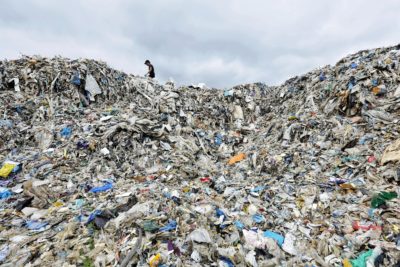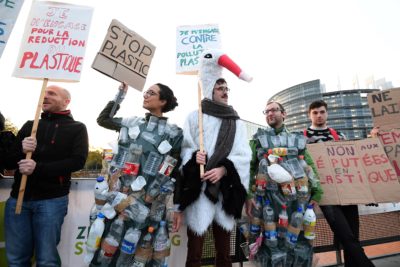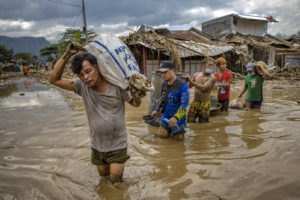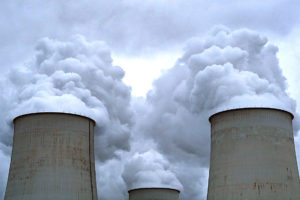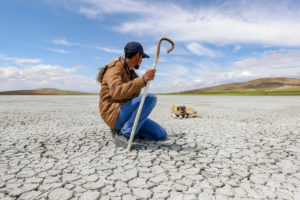在欧洲,居民人已经习惯了散布在海岸线上的塑料垃圾的视线。的确,85 percent在非洲大陆的盐水海滩和海洋中,海洋垃圾上的污染标准超出了污染标准。地中海是最大的,研究人员平均每100米海岸线收集274件塑料垃圾。在海浪下,微塑料将沿海水变成有毒的“塑料汤”。
为了清理欧洲的海滩,全力以赴 - 欧盟开拓性的努力,以解决几乎2800万吨它每年产生的塑料废物 - 7月3日生效,该禁令在欧盟市场上停止了10种塑料产品的销售,这些产品通常在非洲大陆的海岸上洗净。其中包括塑料瓶盖,餐具,吸管和盘子,以及泡沫聚苯乙烯食品和饮料容器。
The ban is the most visible sign of Europe’s efforts to curtail plastics pollution by creating the world’s first-ever circular plastics regime. By the end of this decade, this will lead to a ban on throwaway plastics, the creation of a comprehensive reuse system for all other plastics, and the establishment of an expansive and potentially lucrative European market for recycled plastics.
现在,一系列欧盟措施正在推动投资和创新,据专家和欧盟官员称,这些解决方案将定义欧洲的低碳经济并增强其全球竞争力。循环经济是在整个生命周期中使用产品和材料(从设计和制造到再利用或回收利用)的经济。与当前的线性系统相反,产品最终不会进入垃圾箱,而是重新引入生产过程。
“The EU is taking the creation of a circular economy very seriously, and plastics are at the center of it.”
在下面EU Plastics Strategy, put forward in 2018, waste guidelines will overhaul the way plastic products are designed, used and recycled. All plastic packaging on the EU market must be recyclable by 2030, and the use of microplastics circumscribed.
这些措施是世界上最艰难的措施,并且已经将欧盟的塑料包装回收率推向了历史最高的高度41.5 percent-三次美国的。欧盟设定了一个目标,可以在2025年回收50%的塑料包装,这一目标现已达到目标。在2025年,塑料瓶的单独收集目标将达到77%,到2029年将增加到90%。
This overarching regime will rely on the widespread adoption of extended producer responsibility schemes, which means that if a company introduces packaging or packaged goods into a country’s market, that firm remains responsible for the full cost of the collection, transportation, recycling or incineration of its products. In effect, the polluter pays.
截至今年,欧盟公司可能不再在马来西亚,越南,印度和印度尼西亚等发展中国家的国家卸载塑料废物。通过出口塑料废物,欧盟基本上已经弹出了祸害(每年约170万吨),其中大量数量在露天中燃烧,倒入垃圾填埋场或简单地扔进海中。现在,欧洲被迫解决全部废物负担本身。
“欧盟正在非常重视创造循环经济,塑料是它的中心。”德国循环经济总监Henning Wilts说沃波塔尔气候,环境和能源研究所。
世界其他地方,政府和私营部门对公众对塑料污染的反应,尽管其影响少于欧洲。全球,仅14%至18%根据绿色和平组织的说法,塑料的塑料是回收的(少于欧洲平均水平的一半),在美国少于10%的塑料被回收,尽管许多政府和跨国公司都有高调的承诺来使其产品更加循环,但其中大部分是绿色的,但。
“Many types of commonly used plastic packaging are not recyclable, and are being landfilled, incinerated, or exported without verification of recycling,” according to a绿色和平报告。
美国最大的塑料制造商(最大的制造商),美国产生了世界上最多的塑料废物,这是浪费的。no longer accepts imported waste; many U.S. cities end up pitching plastic waste into landfills or burning it. Congress has commissioned the National Academies of Sciences to conduct a sweeping review of the U.S. contribution to plastic waste, due out at the end of this year.
Only 5 percent of plastic packaging’s value now remains in the European economy after first use
欧洲与塑料废物的斗争将有助于欧盟达到雄心勃勃的气候目标,即到2030年将温室排放量削减1990年的55%。欧盟估计that the drop in oil-based plastics production could shave 3.4 million tons of CO2-equivalent off Europe’s carbon footprint and pre-empt environmental damages that would run to 22 billion euros by 2030.
“ 10项禁令很大。这不是绿色的。”Öko-Institute,德国智囊团。“欧洲绿色协议中有更多的措施来遏制塑料并将圆形确定为欧洲塑料经济的基石原则。甚至大多数欧洲人都不知道现在正在发生多少事情。”
Critics note, however, that the EU’s showy 10-item ban covers just one percent of Europe’s plastic production. They also point out that the total quantity of plastic waste generation in Europe hasnot fallen-something the new measures aim to reverse.
零废物欧洲说,只有在诸如10项禁令和其他措施之类的制裁会充分影响时,欧洲的塑料废物产生才会下降。
意大利布雷西亚大学的经济学家和回收专家Carmine Trecroci说,诸如石油价格之类的外部因素具有重大影响。只要近年来石油便宜,塑料生产也是如此,因此很难遏制它。欧盟的塑料行业是大生意,雇用了150万人,并产生了3500亿欧元2019年。Trecroci说,强大的意大利塑料游说大会为阻止10项禁令而战,然后放慢并稀释它。最终,欧盟批准了该禁令。
尽管欧盟国家仍然生产大量的塑料,但寄给回收利用的消费后塑料废物却飙升了92%since 2006, according to塑料剖析, a European association of plastics manufacturers. Meanwhile, landfilling — by far the dirtiest waste treatment option —has fallen by 54 percent.
自1月1日以来,欧盟的塑料生产商不得不支付levyof 800 euros per metric ton of non-recycled plastic packaging waste. Pressure from Brussels has also resulted in voluntary measures in the private sector: Coca-Cola Europe, for example, is well on its way to manufacturing 50 percent of its plastic bottles and cans from recycled content.
根据欧盟的说法5%首次使用后,塑料包装的价值目前仍在经济中。它估计,这使欧洲经济损失了每年70至1005亿欧元的损失。
洛夫说:“一个封闭的循环是,每种材料,每种产品及其组件都将尽可能长时间使用,修理或翻新,如果损坏,并将其回收到次级原材料中几次,而不会丢失材料质量。”
Wuppertal Institute的Wilts补充说:“欧洲是一个很少有原材料,例如石油和金属的大陆,因此绕过对维珍原材料的需求与环境计划一样多的回收行业。”他和其他人说,随着塑料废物变得更有价值,回收和恢复设施将推动欧洲的回收利用,废物到能源焚化适当地征税,并标准化更多产品以可回收性。威尔特斯说:“在未来五年中,分类和回收设施将翻了一番。”
瓶中的可回收塑料量的强制性最低限度增加了废物的价值,因为生产商需要塑料并将为其付费。
欧洲的新塑料经济可以追溯到1990年代中期,当时延长生产者的责任原则被纳入EU法律。扩展生产者责任(EPR)认为零废物欧洲paper,“对于激励有循环系统的产品的重新设计至关重要……确保生产商承担100%的清理成本将鼓励制造商与市政当局合作,以确保其产品的高收集。”
Trecroci notes that EPR on a significant scale is already a reality in Northern and Central Europe. In德国,公司每年支付总计15亿欧元的费用,以资助其废物最终物质的运输,分类和回收利用。Trecroci说:“在南欧,我们处于较早的阶段,但EPR也将在几年内完全适用。”
Also, in 2019 the EU adopted a directive that by 2025 all EU countries integrate 25 percent recycled plastic in clear plastic bottles and 30 percent in all plastic beverage bottles by 2030. This mandatory minimum — already in force in Germany, Denmark and Norway — adds value to plastic waste, since plastic producers need it and will pay for it.
威尔特斯说:“这产生了对高质量回收材料的需求。”他说,很快,相同的原则(最少的回收内容)将适用于汽车和建筑部门。
根据Wilts的说法,创造这种新的循环经济所需的广泛私营部门网络仅在现在才能获得动力。他说:“最终,回收行业将生产工业制造业的基本材料。”“但是我们还不到那儿。”

